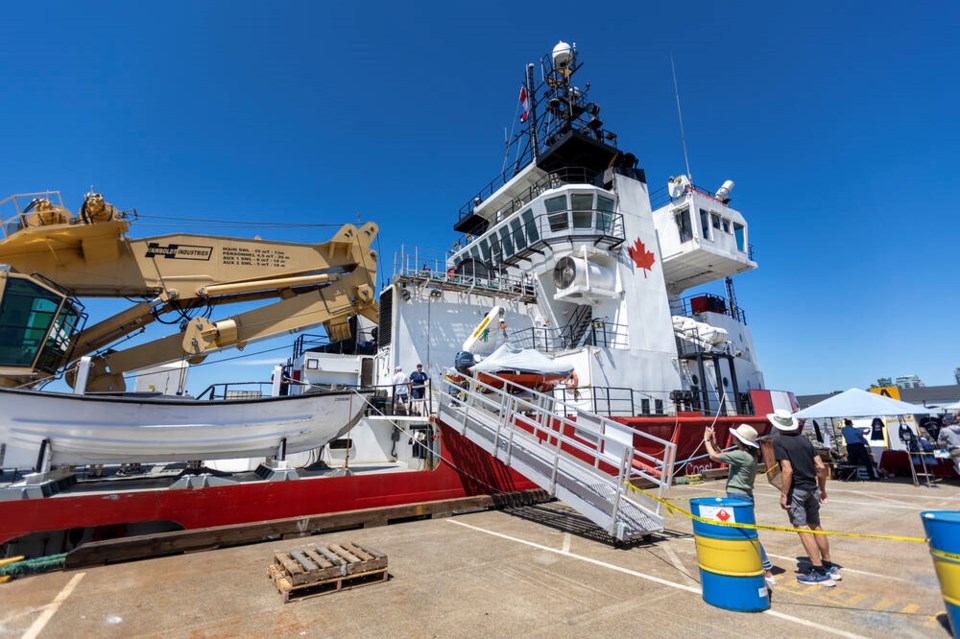According to NATO, the 2% figure should include all costs associated with maintaining and operating a nation’s armed forces

A commentary by a retired naval officer who lives in Victoria.
Re: “Military vice-chief says there are no plans to arm coast guard vessels,” June 17.
What does 2% of GDP for defence mean for Canada?
Compared to most NATO partners, Canada does not calculate its defence spending accurately, since it fails to include some defence-related components.
For instance, the RCMP budget along with the Canadian Coast Guard should be considered defence expenses and be included in the 2% calculations. Most NATO nations include police and coast guard expenses in their calculations of defence spending.
According to NATO, the 2% figure should include all costs associated with maintaining and operating a nation’s armed forces. This covers salaries and benefits for military personnel, procurement of weapons and equipment, operational expenses like training and maintenance and the development and upkeep of military infrastructure.
Retirement pensions made directly by the government to retired military and civilian employees of military departments and for active personnel are to be included in the NATO defence expenditure definition.
Also included in the 2% calculations are police departments and paramilitary forces such as the coast guard.
A paramilitary organization (also listed as quasi military) is a semi-militarized force whose organizational structure, tactics, training, subculture and (often) function are similar to those of a professional military but is not formally part of a country’s armed forces.
Here are some examples of these inclusions from various NATO members:
The French Gendarmerie (Gendarmerie nationale) is part of the French Armed Forces and thus under the purview of the Ministry of Defence. However, for its internal security and policing duties within France, it operates under the authority of the Ministry of the Interior.
In Italy, the Carabinieri are under the Ministry of Defence. They also have a role in public order and security, even though they are considered a branch of the Italian armed forces.
In Spain, the Guardia Civil in Spain is not solely under the Ministry of Defence. It operates under the authority of both the Ministry of Interior and the Ministry of Defence. While the Ministry of the Interior oversees its policing role, the Ministry of Defence is responsible for military missions.
In Poland, the Military Gendarmerie (Żandarmeria Wojskowa) is a police force that falls under the authority of the Ministry of Defence.
The Norwegian coast guard is under the Royal Norwegian Navy, which is a branch of the Norwegian Armed Forces and thus ultimately under the Ministry of Defence.
In Canada, the RCMP’s mandate is multifaceted. It includes preventing and investigating crime, maintaining peace and order, enforcing laws, contributing to national security, ensuring safety of state officials, visiting dignitaries and foreign missions and providing vital operational support services to other police forces.
The RCMP is considered a paramilitary force in Canada, although its functions are primarily domestic policing.
Similarly, the Canadian Coast Guard is a special operating agency that works to ensure the safety of mariners in Canadian waters and protect Canada’s marine environment and coastline. It helps to ensure Canada’s sovereignty and security through its presence in Canadian waters, and it is even equipped with two ships that are similar to the Canadian Navy’s Arctic Offshore Patrol Ships. It should also be designated as a paramilitary force.
According to NATO, expenditures for the military component of mixed civilian-military activities are to be included, but only when the military component can be specifically accounted for or estimated. For example, these include airfields, meteorological services, aids to navigation, joint procurement services, research and development.
Looking at Canada’s numbers. Canada’s GDP is $2.3 trillion, and hence 2% for defence would be $46 billion. The defence budget is $31 billion. Adding the RCMP budget of $6 billion, and the coast guard budget of $3 billion, this would bring defence spending to $40 billion.
The government has promised to add $6 billion to the defence budget, and that would have Canada meet its NATO commitment of 2% of GDP for defence.